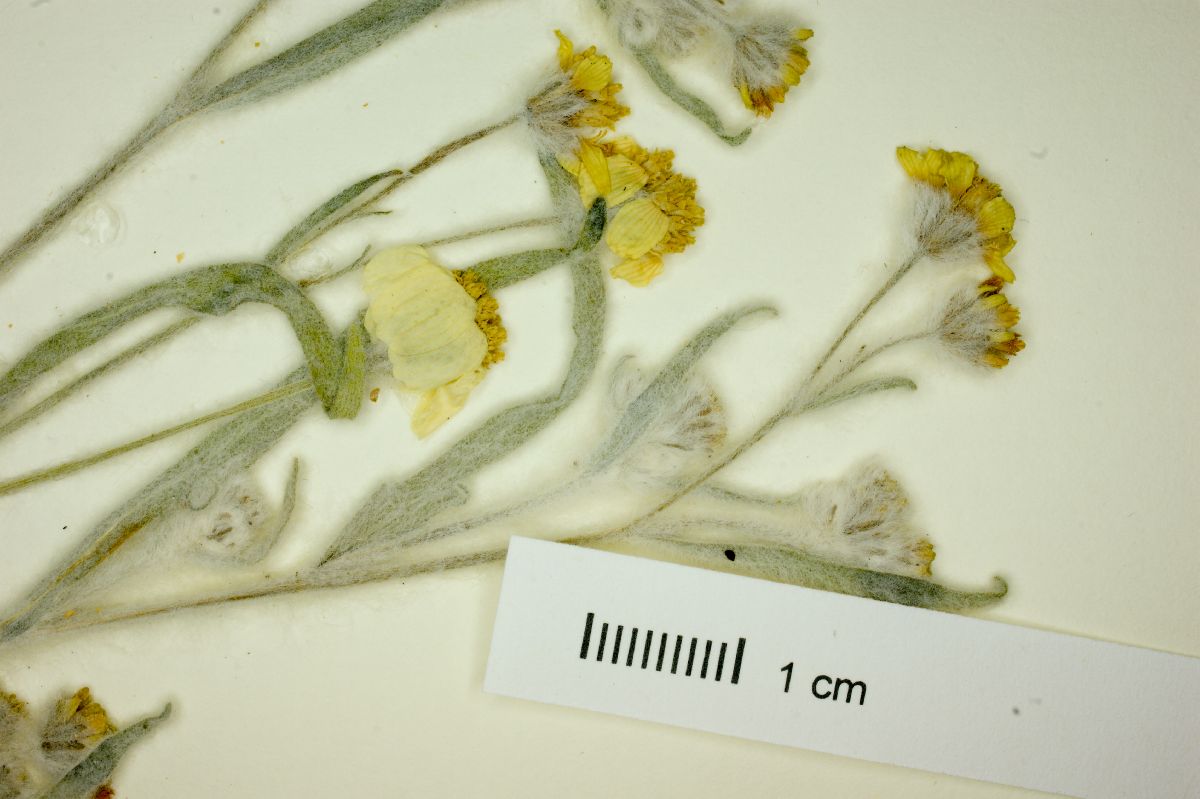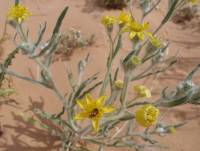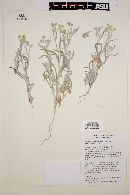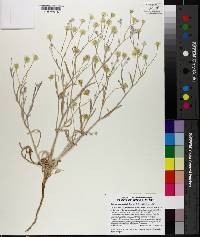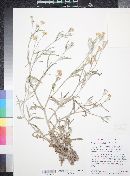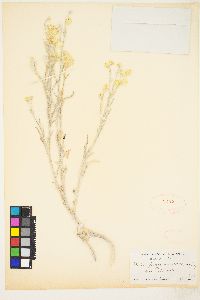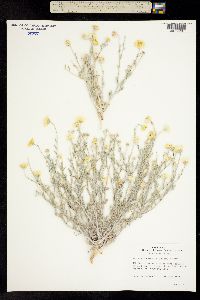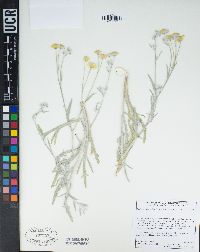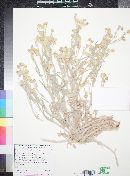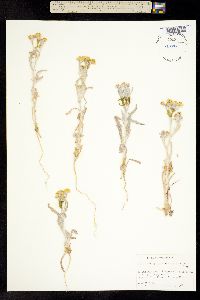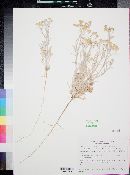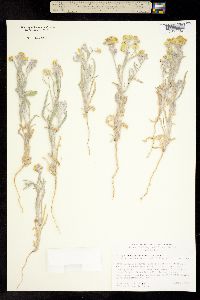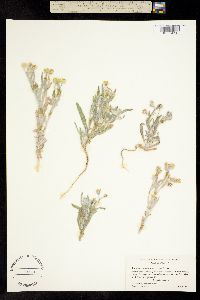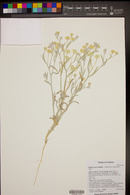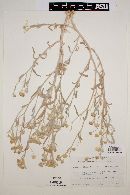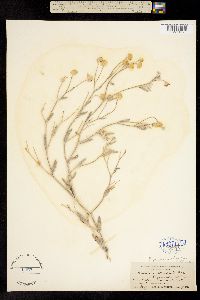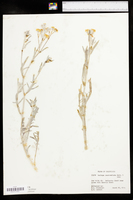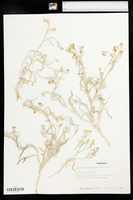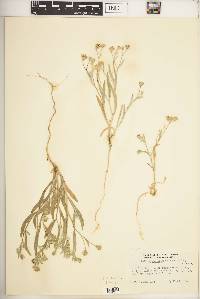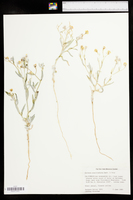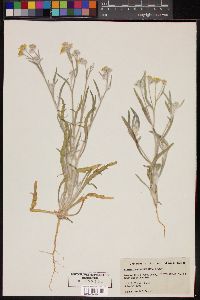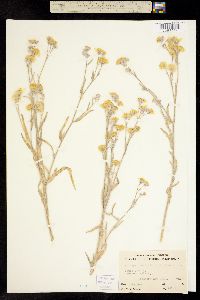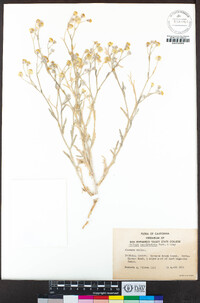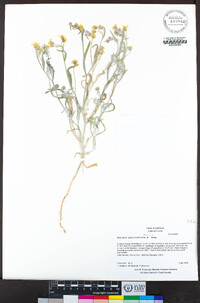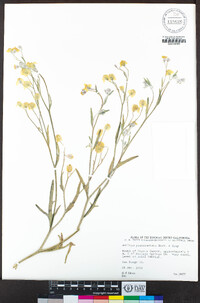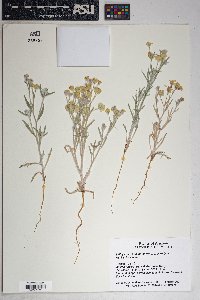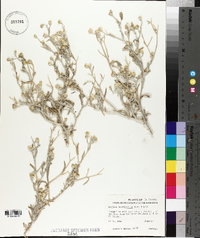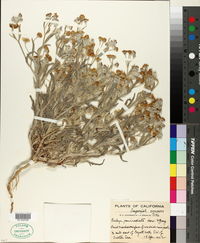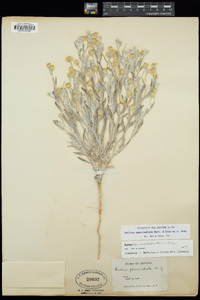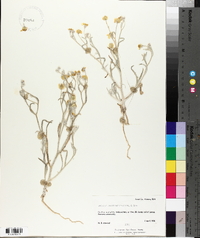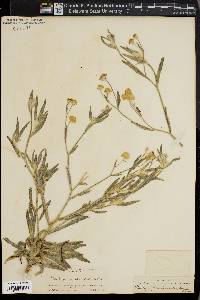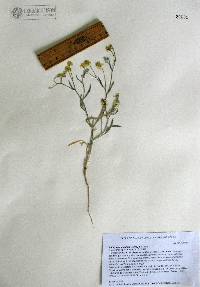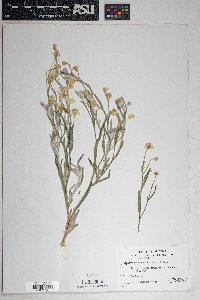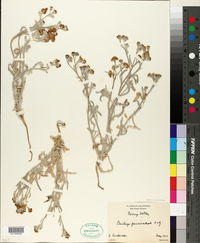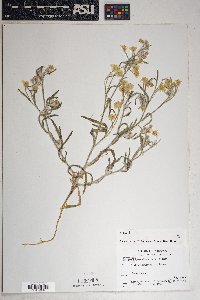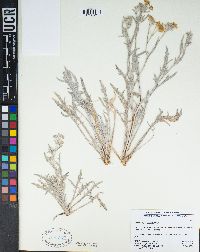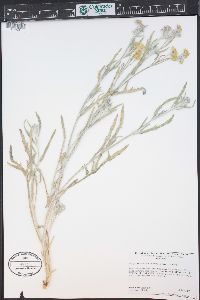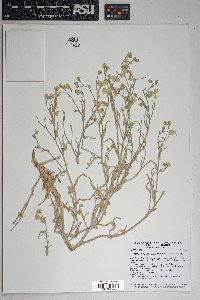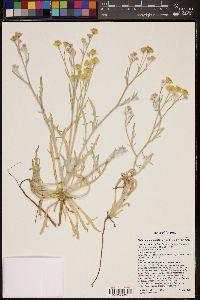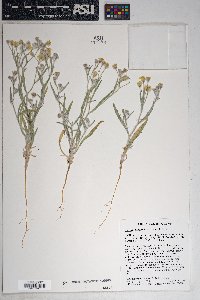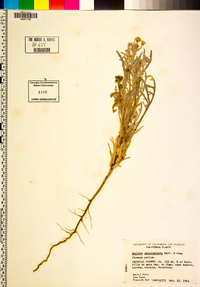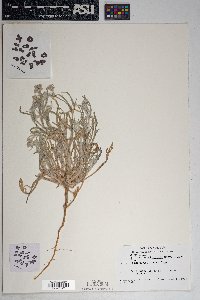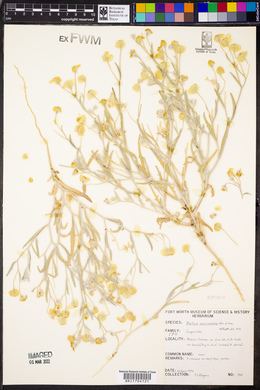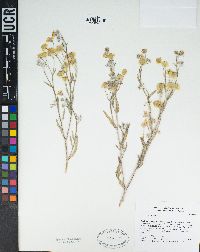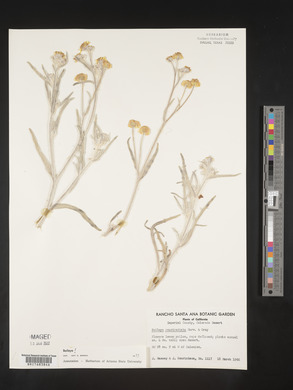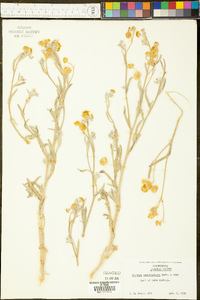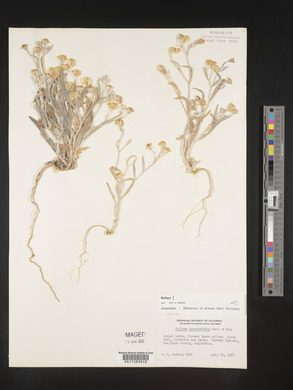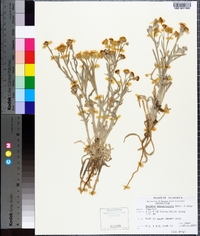Baileya pauciradiata
|
|
|
|
Family: Asteraceae
Laxflower, more...lax-flower
|
Plants mostly 20-75 cm. Leaves: basal leaves (not persistent) mostly 5-12 × 0.5-1 cm; petioles often in-distinct; blades linear-oblanceolate to oblanceolate, sometimes pinnately lobed; cauline leaves linear, seldom lobed, often not reduced distally. Heads in loose, cymiform arrays. Peduncles 2-5 cm. Involucres campanulate, mostly 5-8 × 5-8 mm. Phyllaries mostly 8-13, floccose-tomentose. Rays mostly 5-7; laminae elliptic to ovate, mostly 5-8 × 4-6 mm, apices shallowly to indistinctly 3-toothed. Disc florets mostly 10-20; corollas 2.5-3 mm, tubes 0.4 mm, lobes 0.25 mm; style-branch apices truncate. Cypselae 3 mm. 2n = 32. Flowering Mar-May. Sandy soils, deserts; 60-700 m; Ariz., Calif.; Mexico (Baja California, Sonora). The most distinct species of the genus, Baileya pauciradiata has the most limited distribution and is, perhaps, the least abundant. Baileya pauciradiata also possesses cytotoxic sesquiterpene lactones, namely odoratin and paucin (J. J. Hoffmann et al. 1978). Baileya pauciradiata is connected to the moth Schinia pallicincta Smith, which is closely related to the species of noctuid moth that inhabits B. multiradiata. Schinia pallicincta occupies mostly sand dunes of southern California and uses B. pauciradiata as a primary feeding source (T. G. Myles and B. F. Binder 1990). Baileya pauciradiata has occasionally been found growing with or near B. pleniradiata; natural hybrids between them have not been recorded, nor have synthetic crosses been successful (R. C. Brown 1974). Brown supported the genetic isolation of the species from the other taxa by demonstrating complete barriers to gene exchange.
FNA 2006, Wiggins 1964, Kearney and Peebles 1969 Duration: Annual Nativity: Native Lifeform: Forb/Herb General: Slender annual 20-75 cm tall with tufts of small hairs, erect or ascendingly branched. Leaves: Basal not persistent, mostly 5-12 cm long, 0.5-1 cm wide, indistinct petiole, blades linear-oblanceolate to oblanceolate, sometimes pinnately lobed, densely but loosely villous; cauline leaves linear, seldom lobed, often not reduced distally. Flowers: Heads in loose corymb-cymose arrays on peduncles 2-5 cm long, with campanulate involucre, 5-8 mm; phyllaries mostly 8-13, with tufts of small hairs to tomentose, rays mostly 5-7 elliptic to ovate, 5-7 mm long by 4-6 mm wide, apices shallowly 3-toothed, yellow; disk florets mostly 10-20, corollas 2.5-3 mm, tubes 0.4 mm, lobes 0.25 mm. Fruits: Cypselae 3-5 mm, linear to slightly club shaped, striately ribbed and indistinctly angled. Ecology: Found on sandy soils, especially dunes from 200-2,500 ft (61-762 m); flowers March-May. Distribution: sw AZ, se CA; south to n MEX (Sonora, Baja California) Notes: This species is isolated to the southwestern deserts of Arizona and California. Not found in most of the Sonoran Desert. There was an incorrect identification at FOBO in the late 1970s. Ethnobotany: Unknown Etymology: Baileya is named for Jacob Whitman Bailey (1811-1857) an early American microscopist, while pauciradiata comes from the Latin meaning few-rayed. Synonyms: None Editor: SBuckley, 2010 |

